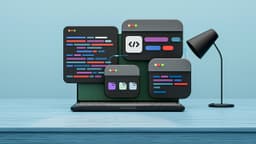How to Effectively Use Laravel DebugBar to Enhance Your Development
Are you looking to improve your Laravel development process? Laravel DebugBar is a tool that can provide valuable information about your application's performance and database queries. This article outlines how to effectively use Laravel DebugBar to enhance debugging and optimization efforts.
What is Laravel DebugBar?
Laravel DebugBar is a package that creates a toolbar for Laravel applications. It provides detailed information about various aspects of application performance, including database queries, requests, views, and more. This information helps developers identify bottlenecks and optimize applications for better performance.
Installation
To start using Laravel DebugBar, install it via Composer. Run the following command in your terminal:
Bash
Next, publish the configuration file by running this command:
Bash
This process generates a debugbar.php file in your config directory, allowing you to customize DebugBar's behavior.
Enabling DebugBar
After installation, you can enable DebugBar in your Laravel application's environment files. Open the .env file and set APP_DEBUG to true:
Php
You can also enable or disable DebugBar based on the environment with this code snippet in your AppServiceProvider:
Php
Utilizing Laravel DebugBar
Once set up, you can utilize DebugBar's features to gain insights into your application's performance. Here are some key functionalities:
1. Debugging Queries
DebugBar shows real-time database queries, which helps in identifying slow queries. View the executed queries in the "Queries" tab while interacting with your application.
2. Timing Information
DebugBar provides timing data for routes, views, and events. Analyzing this data allows you to identify areas causing delays and optimize them.
3. Request Information
The "Request" tab displays detailed information about the current HTTP request, such as input parameters, session data, and headers. This information is valuable for troubleshooting data flow within your application.
4. Debugging Views
Inspect the rendered views for a specific request, including the data passed to them. This feature helps identify issues with view logic and ensures the correct data displays.
5. Configuration
Customize DebugBar behavior through the debugbar.php configuration file. Modify features, appearance, and data collectors according to your needs.
Best Practices for Using Laravel DebugBar
To make the most of Laravel DebugBar, consider these best practices:
- Enable for Development Only: Use DebugBar during development and disable it in production to protect sensitive information.
- Check Queries and Timings Regularly: Frequently review queries and timing data to catch performance bottlenecks early.
- Utilize Data Collectors: Explore different data collectors to gain insights into events, routes, and cache.
- Optimize Based on Insights: Use the information from DebugBar to enhance code, database queries, and view rendering.
Utilizing Laravel DebugBar effectively can provide insights into your application's performance and help optimize your development process. Take full advantage of DebugBar's features for efficient debugging and high-quality Laravel application development.












